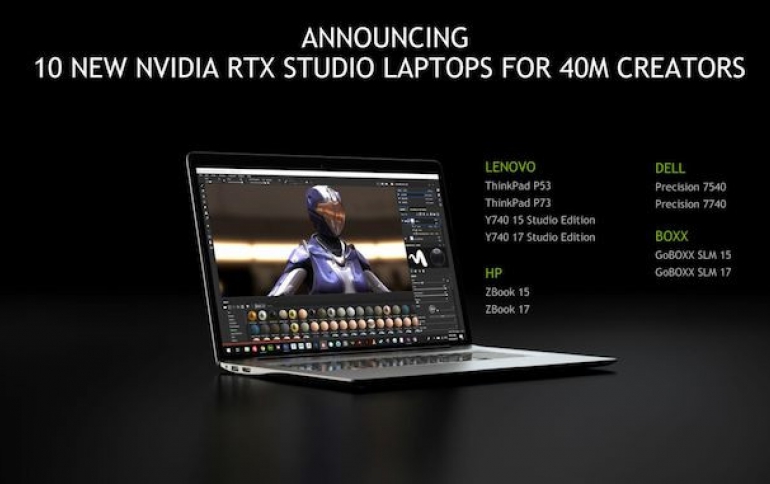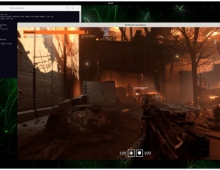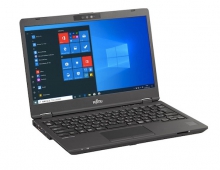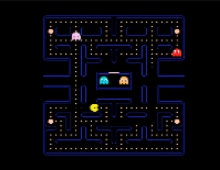
SIGGRAPH: NVIDIA Announces New RTX Studio Laptops, Brings Ray Tracing, AI to Creatives
Ten new NVIDIA RTX Studio laptops and professional-grade mobile workstations are being released by Nvidia's partners, delivering real-time ray tracing, AI and ultra-high-resolution video editing to creatives.
The latest designs from Dell, HP, Lenovo and BOXX bring the number of RTX Studio models to 27 — including 17 that are now available. These laptops power more than 40 creative and design applications that have turned “RTX On,” enabling creatives to harness ray tracing and AI in their workflows. NVIDIA RTX features are being shown at SIGGRAPH this week in software from independent software vendors, including Adobe, Autodesk and Blackmagic Design.
NVIDIA also announced the availability of a new NVIDIA Studio Driver, which provides optimizations for popular creative apps updating around SIGGRAPH, including OTOY Octane Render, Blender, Autodesk Arnold, Maxon Cinema 4D, Substance Painter by Adobe and Magix VEGAS Pro. The latest Studio Driver adds support for 30-bit color in OpenGL apps such as Adobe Photoshop and Premiere for all GPUs. With this feature, creators can work with their HDR photos and videos with full accuracy and without the banding typical of 24-bit color.
The new configurations, which range from consumer laptops with GeForce RT™ 2060 GPUs to professional-grade mobile workstations with Quadro RTX 5000 graphics, include:
- Lenovo Legion Y740 Laptop Studio Edition features up to GeForce RTX 2080 GPUs within 17- and 15-inch laptops, available later this fall.
- Lenovo ThinkPad P53 and P73 mobile workstations support up to Quadro RTX 5000 GPUs within 17- and 15-inch systems. The ThinkPad P53 is available now; the ThinkPad P73 will be available starting August.
- Dell Precision 7540 and Dell Precision 7740 mobile workstations, available today, are configurable with up to Quadro RTX 5000 GPUs.
- HP ZBook 15 and 17 mobile workstations feature Quadro RTX GPUs, with the 17-inch model configurable with up to a Quadro RTX 5000.
- BOXX GoBOXX SLM mobile workstations are available with a Quadro RTX 3000 GPU in the 15-inch system and either Quadro RTX 4000 or 3000 in the 17-inch system.
RTX Studio laptops and mobile workstations are part of the NVIDIA Studio platform, which combines RTX GPUs with the NVIDIA Studio Stack of specialized SDKs and dedicated Studio Drivers. They meet the hardware and software requirements needed to receive the new RTX Studio badge, allowing creators to identify the right systems to power their creative workflows.
The systems and drivers are supported with hardware and software testing for top creative applications and workflows. RTX Studio mobile workstations based on Quadro RTX GPUs provide additional enterprise-level benefits, such as ISV certifications, IT management tools and advanced video and display features.
RTX Studio systems feature GeForce RTX 2080, 2070 and 2060 GPUs, as well as Quadro RTX 5000, 4000 and 3000 GPUs. The RTX GPUs accelerate content creation from video editing to 3D rendering, with performance up to 7x faster than that of the MacBook Pro, according to Nvidia. Quadro RTX 5000 GPU-based models include 16GB of graphics memory, the largest available in a mobile form factor.
Many of these laptops feature 4K precision displays and NVIDIA Max-Q technology.
RTX Studio models available now include Acer ConceptD 7, Gigabyte AERO 15 OLED and AERO 17 HDR, BOXX GoBOXX SLM 15 and 17, Dell Precision 7540 and 7740, HP ZBook 15 and 17, Lenovo ThinkPad P53, MSI P65 Creator, P75 Creator, WS65, WS75 and WE75, and Razer Blade 15 Studio Edition. Additional RTX Studio laptops are shipping later this year from Acer, ASUS, Dell, HP, Lenovo and Razer.
RTX On: Applications Take Content Creation to New Heights
NVIDIA unveiled the RTX technology at SIGGRAPH 2018. Since then, leading software makers have introduced over 40 applications with RTX technology, which will enable users to harness ray tracing and AI. Seven applications from ISVs are being introduced this week at SIGGRAPH.
Pixar, Renault, New Balance, Woods Bagot and Siemens Healthineers are using ray tracing in their workflows. The gaming industry’s engines — Unity and Unreal Engine — support ray tracing with RTX, and RTX technology is integrated by visual computing giants like Adobe, Autodesk, Blackmagic Design and Dassault Systèmes.
Ray tracing calculates each photon of light in a scene as it interacts with materials and surfaces. This provides far more accurate and lifelike images than traditional computer graphics. The NVIDIA RTX platform, which includes software tools and hardware acceleration of ray tracing and AI, enables interactive ray tracing for the first time.
RTX allows designers to interactively iterate their product, model or building and see accurate lighting, shadows and reflections. Digital artists in the entertainment field can apply the same principles to their animations and visual effects.
RTX technology can also be used in servers for batch rendering of scenes too complex to visualize in real time, or for “light baking” — pre-calculating how textures will look in certain environments for games and other interactive visualization. And the AI acceleration facilitates denoising, pose estimation and other advanced capabilities that enable new features for animators and visual artists of all kinds.
At SIGGRAPH, seven top ISVs debuted new applications with support for NVIDIA RTX, including:
- Adobe Substance Painter: RTX ray tracing accelerates baking performance up to 192x faster than CPUs.
- Autodesk Flame: RTX Tensor Cores dramatically accelerate the new machine learning feature set of Autodesk Flame v2020. The built-in machine learning analysis algorithms help artists isolate, extract and modify common objects in moving footage, dramatically accelerating visual effects and compositing workflows.
- Blender Cycles: NVIDIA OptiX 7 with CUDA accelerates performance of open source renderer.
- Dimension 5 D5 Fusion: RTX ray tracing via UE4’s implementation of DXR allows architects and designers to quickly simulate ground truth lighting and shadows.
- Daz 3D Daz Studio: NVIDIA Iray allows creators to assemble scenes with interactive RTX accelerated ray tracing to quickly build their artistic composition and render out in full fidelity.
- Foundry MODO: RTX performance through OptiX in the completely redesigned MODO path-traced renderer offers a significant performance boost over CPU rendering.
- Luxion KeyShot: RTX accelerated ray tracing and AI denoising for photorealistic visualization of 3D data for product design reviews, marketing, animations, illustrations and more via OptiX support in KeyShot 9.
Popular apps like Adobe Dimension CC and Chaos Group V-Ray provide users the ability to create realism powered by RTX technology’s RT Cores. Adobe Substance designer can deliver speed increases of up to 800 percent compared with previous CPU-based technology by integrating RTX through DXR for light baking.
The latest version of BlackMagic Design’s DaVinci Resolve with DaVinci Neural Engine is transforming video production with AI by using the NVIDIA AI libraries and Tensor Cores found on NVIDIA RTX GPUs to accelerate inferencing.
In the data center, NVIDIA RTX Servers — which include fully optimized software stacks available for OptiX RTX rendering, gaming, VR and AR, and professional visualization applications — deliver cinematic-quality graphics enhanced by RTX ray tracing for less than the cost of electricity for a CPU-based rendering cluster with the same performance.





















